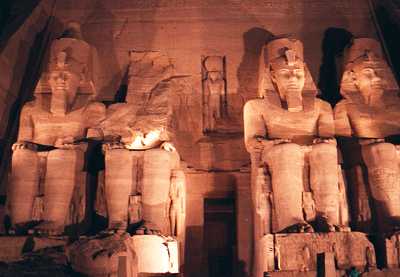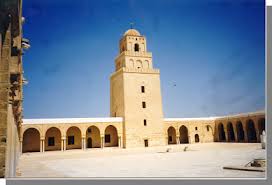

The three pyramids of Gizeh were erected in this town, which is a peripheral neighbourhood of Cairo, nowadays. They hold the tombs of three important pharaohs of the Fourth Dynasty: Khufu, Kafre, and Menakure. The three pyramids were complexively erected between 2528 BC and 2472 BC. Khufu's pyramid is the hugest in Egypt and is the only "Wonder of the Ancient World" still existing. They represent the culmination of an architectonic process started with "Mastaba". Inside, each pyramid has a thieves' tunnel, a grand gallery, the chamber of its king, the chamber of its queen, a false tomb chamber, relieving blocks, and supposed airshafts. Pyramids symbolized the sun and the afterlife of pharaohs among their gods.

The Valley of the Kings is in Abu Simbel, not far from Luxor. Here, the temple of Ramses II was erected between 1290 BC and 1224 BC. It shows four sandstone colossi on its fašade. Everyone is 65 feet high. The distance from the fašade to the back wall is 206 feet. The statues inside represent the wives and the children of the pharaoh.

The Great Mosque of Kairouan, which is not far from Tunis, was erected between 836 and 875. At that time, Abbasid dynasty reigned over current Tunisia. Although the building has been mainly used as a mosque, it was used as a university, too. Here, the most studied subjects were theology and lay sciences. The building is 450 feet high and 260 high. It is mainly recovered by white marble. Its plan is rectangular, and so is its inner courtyard. Four qibla walls are placed on the corners of the building. There are also two domes; one of them surmounts a mihrab. The entrance of the mosque is surmounted by a dome, too. A nave crosses the inner structure of the mosque. Two hypostyle prayer halls frame it; each one is composed of eight aisles. A minaret is placed on the main gate.

The Ketchaoua Mosque is in Alger. It was erected in 1612, but French colonizers transformed it into Saint Philip's Cathedral in 1845. It was retransformed into a mosque in 1962. This retransformation happened when Algeria became independent. Its architectonic style mixes Moorish and Byzantine architectonic traditions. The fašade of the building is reachable through a 23 steps flight. The gateway of the mosque is characterized by a portico supported by four black-veined marble columns. Inside, are arcades built with white marble columns. Two octagunal minarets flank the entrance of the mosque. One of the chambers holds the tomb of Saint Hieronymus.